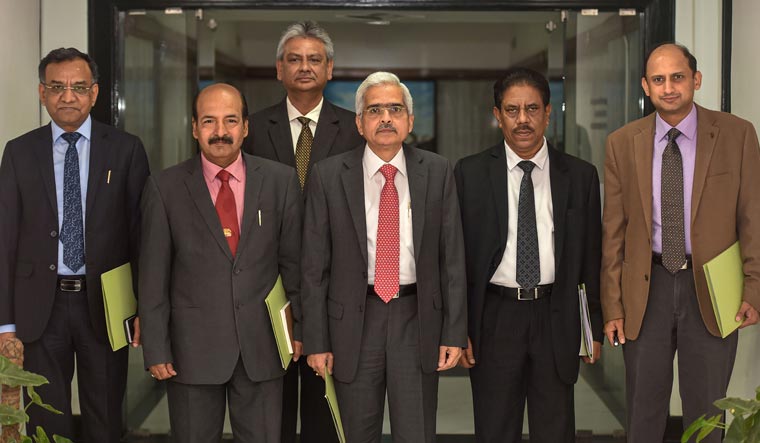The Reserve Bank of India’s Monetary Policy Committee (MPC) on Thursday reduced its repo rate for a third consecutive time, and also turned “accommodative” from “neutral,” as the central bank looks to give a boost to the economy, which grew at its slowest pace in more than four years in the January-March quarter.
The MPC cut the benchmark repo rate by 0.25 per cent (25 basis points) to 5.75 per cent from 6.0 per cent earlier. Consequently, the reverse repo rate will be at 5.50 per cent and the bank rate at 6.0 per cent. Repo rate is the benchmark rate at which a central bank lends to commercial banks.
“The MPC notes that growth impulses have weakened significantly, as reflected in a further widening of the output gap compared to the April 2019 policy. A sharp slowdown in investment activity along with a continuing moderation in private consumption growth is a matter of concern,” RBI said in its assessment on Thursday.
India’s GDP grew at a lower-than-expected rate of 5.8 per cent in the fourth quarter of the year-ended March 2019. Signs of a slowdown are visible across sectors. RBI noted moderation in activity in the services sector, automobile sales have contracted in April and railway freight traffic growth decelerated. India’s industrial production contracted 0.1 per cent in March.
The RBI has lowered its GDP growth forecast for 2019-20 to 7.0 per cent from the earlier projection of 7.2 per cent. It expects the GDP growth to range between 6.4 per cent to 6.7 per cent in the first half of the current financial year and 7.2 per cent to 7.5 per cent in the second half.
Consumer Price Index (CPI) inflation has been subdued and is likely to remain below the central bank’s 4 per cent target this year, which could open room for further rate cuts. RBI expects retail inflation to range between 3.0 per cent to 3.1 per cent in the first half of the year and 3.4 per cent to 3.7 per cent in the second half. There are however, risks related to how the monsoon pans out, unseasonal spikes in vegetable prices, how crude oil prices move, geopolitical tensions and the fiscal scenario.
“The headline inflation trajectory remains below the target mandated to the MPC even after taking into account the expected transmission of the past two policy rate cuts. Hence, there is scope for the MPC to accommodate growth concerns by supporting efforts to boost aggregate demand, and in particular reinvigorate private investment activity while remaining consistent with its flexible inflation targeting mandate,” RBI said.
The RBI had cumulatively cut its repo rate by 0.50 per cent (50 bps) over the two previous MPC meetings in February and April this year. However, transmission of interest rates by banks has only been 21 bps to the weighted average lending rate on fresh rupee loans. The weighted average lending rate on outstanding rupee loans, rather, increased by 4 bps, as the past loans continue to be priced at high rates, RBI noted.
RBI Governor Shaktikanta Das had stressed in the previous MPC meetings on the need for quicker transmission of interest rates by banks, which remains a challenge, say experts.
“The real concern is the lack of transmission of rate cuts into effective lending rates,” said Sujan Hajra, chief economist at Anand Rathi Shares.
Suvodeep Rakshit, senior economist at Kotak Institutional Equities, said while the rate cut was expected, the change in stance was a bit of a surprise, which debt markets would consider a big positive.
“We maintain our call for another 25 bps rate cut in August, factoring in the benign inflation trajectory and the growing concerns on growth,” he said, adding that transmission of interest rates would be key.
Sonal Varma, chief India economist at Nomura Securities, said the change in policy stance by the RBI to “accommodative” could hint at further easing of interest rates ahead.



